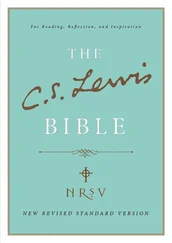Standard Template Library Programmer's Guide
Здесь есть возможность читать онлайн «Standard Template Library Programmer's Guide» весь текст электронной книги совершенно бесплатно (целиком полную версию без сокращений). В некоторых случаях можно слушать аудио, скачать через торрент в формате fb2 и присутствует краткое содержание. Жанр: Программирование, Справочники, на английском языке. Описание произведения, (предисловие) а так же отзывы посетителей доступны на портале библиотеки ЛибКат.
- Название:Standard Template Library Programmer's Guide
- Автор:
- Жанр:
- Год:неизвестен
- ISBN:нет данных
- Рейтинг книги:4 / 5. Голосов: 1
-
Избранное:Добавить в избранное
- Отзывы:
-
Ваша оценка:
- 80
- 1
- 2
- 3
- 4
- 5
Standard Template Library Programmer's Guide: краткое содержание, описание и аннотация
Предлагаем к чтению аннотацию, описание, краткое содержание или предисловие (зависит от того, что написал сам автор книги «Standard Template Library Programmer's Guide»). Если вы не нашли необходимую информацию о книге — напишите в комментариях, мы постараемся отыскать её.
Standard Template Library Programmer's Guide — читать онлайн бесплатно полную книгу (весь текст) целиком
Ниже представлен текст книги, разбитый по страницам. Система сохранения места последней прочитанной страницы, позволяет с удобством читать онлайн бесплатно книгу «Standard Template Library Programmer's Guide», без необходимости каждый раз заново искать на чём Вы остановились. Поставьте закладку, и сможете в любой момент перейти на страницу, на которой закончили чтение.
Интервал:
Закладка:
set_symmetric_difference
Category: algorithms
Component type: function
Set_symmetric_difference is an overloaded name; there are actually two set_symmetric_difference functions.
template
OutputIterator set_symmetric_difference(InputIterator1 first1, InputIterator1 last1, InputIterator2 first2, InputIterator2 last2, OutputIterator result);
template
OutputIterator set_symmetric_difference(InputIterator1 first1, InputIterator1 last1, InputIterator2 first2, InputIterator2 last2, OutputIterator result, StrictWeakOrdering comp);
Set_symmetric_difference constructs a sorted range that is the set symmetric difference of the sorted ranges [first1, last1) and [first2, last2) . The return value is the end of the output range.
In the simplest case, set_symmetric_difference performs a set theoretic calculation: it constructs the union of the two sets A – B and B – A , where A and B are the two input ranges. That is, the output range contains a copy of every element that is contained in [first1, last1) but not [first2, last2) , and a copy of every element that is contained in [first2, last2) but not [first1, last1) . The general case is more complicated, because the input ranges may contain duplicate elements. The generalization is that if a value appears m times in [first1, last1) and n times in [first2, last2) (where m or n may be zero), then it appears |m-n| times in the output range. [1] Set_symmetric_difference is stable, meaning that the relative order of elements within each input range is preserved.
The two versions of set_symmetric_difference differ in how they define whether one element is less than another. The first version compares objects using operator< , and the second compares objects using a function object comp .
Defined in the standard header algorithm, and in the nonstandard backward-compatibility header algo.h.
For the first version:
• InputIterator1 is a model of Input Iterator.
• InputIterator2 is a model of Input Iterator.
• OutputIterator is a model of Output Iterator.
• InputIterator1 and InputIterator2 have the same value type.
• InputIterator 's value type is a model of LessThan Comparable.
• The ordering on objects of InputIterator1 's value type is a strict weak ordering , as defined in the LessThan Comparable requirements.
• InputIterator 's value type is convertible to a type in OutputIterator 's set of value types.
For the second version:
• InputIterator1 is a model of Input Iterator.
• InputIterator2 is a model of Input Iterator.
• OutputIterator is a model of Output Iterator.
• StrictWeakOrdering is a model of Strict Weak Ordering.
• InputIterator1 and InputIterator2 have the same value type.
• InputIterator1 's value type is convertible to StrictWeakOrdering 's argument type.
• InputIterator 's value type is convertible to a type in OutputIterator 's set of value types.
For the first version:
• [first1, last1) is a valid range.
• [first2, last2) is a valid range.
• [first1, last1) is ordered in ascending order according to operator< . That is, for every pair of iterators i and j in [first1, last1) such that i precedes j , *j < *i is false .
• [first2, last2) is ordered in ascending order according to operator< . That is, for every pair of iterators i and j in [first2, last2) such that i precedes j , *j < *i is false .
• There is enough space to hold all of the elements being copied. More formally, the requirement is that [result, result + n) is a valid range, where n is the number of elements in the union of the two input ranges.
• [first1, last1) and [result, result + n) do not overlap.
• [first2, last2) and [result, result + n) do not overlap.
For the second version:
• [first1, last1) is a valid range.
• [first2, last2) is a valid range.
• [first1, last1) is ordered in ascending order according to comp . That is, for every pair of iterators i and j in [first1, last1) such that i precedes j , comp(*j, *i) is false .
• [first2, last2) is ordered in ascending order according to comp . That is, for every pair of iterators i and j in [first2, last2) such that i precedes j , comp(*j, *i) is false .
• There is enough space to hold all of the elements being copied. More formally, the requirement is that [result, result + n) is a valid range, where n is the number of elements in the union of the two input ranges.
• [first1, last1) and [result, result + n) do not overlap.
• [first2, last2) and [result, result + n) do not overlap.
Linear. Zero comparisons if either [first1, last1) or [first2, last2) is empty, otherwise at most 2 * ((last1 – first1) + (last2 – first2)) – 1 comparisons.
inline bool lt_nocase(char c1, char c2) { return tolower(c1) < tolower(c2); }
int main() {
int A1[] = {1, 3, 5, 7, 9, 11};
int A2[] = {1, 1, 2, 3, 5, 8, 13};
char A3[] = {'a', 'b', 'b', 'B', 'B', 'f', 'g', 'h', 'H'};
char A4[] = {'A', 'B', 'B', 'C', 'D', 'F', 'F', 'H' };
const int N1 = sizeof(A1) / sizeof(int);
const int N2 = sizeof(A2) / sizeof(int);
const int N3 = sizeof(A3);
const int N4 = sizeof(A4);
cout << "Symmetric difference of A1 and A2: ";
set_symmetric_difference(A1, A1 + N1, A2, A2 + N2, ostream_iterator(cout, " "));
cout << endl << "Symmetric difference of A3 and A4: ";
set_symmetric_difference(A3, A3 + N3, A4, A4 + N4, ostream_iterator(cout, " "), lt_nocase);
cout << endl;
}
The output is
Symmetric difference of A1 and A2: 1 2 7 8 9 11 13
Symmetric difference of A3 and A4: B B C D F g H
[1] Even this is not a completely precise description, because the ordering by which the input ranges are sorted is permitted to be a strict weak ordering that is not a total ordering: there might be values x and y that are equivalent (that is, neither x < y nor y < x ) but not equal. See the LessThan Comparable requirements for a more complete discussion. The output range consists of those elements from [first1, last1) for which equivalent elements do not exist in [first2, last2) , and those elements from [first2, last2) for which equivalent elements do not exist in [first1, last1) . Specifically, suppose that the range [first1, last1) contains m elements that are equivalent to each other and the range [first2, last2) contains n elements from that equivalence class (where either m or n may be zero). If m > n then the output range contains the lastm – n of these elements elements from [first1, last1) , and if m < n then the output range contains the last n – m of these elements elements from [first2, last2) .
Читать дальшеИнтервал:
Закладка:
Похожие книги на «Standard Template Library Programmer's Guide»
Представляем Вашему вниманию похожие книги на «Standard Template Library Programmer's Guide» списком для выбора. Мы отобрали схожую по названию и смыслу литературу в надежде предоставить читателям больше вариантов отыскать новые, интересные, ещё непрочитанные произведения.
Обсуждение, отзывы о книге «Standard Template Library Programmer's Guide» и просто собственные мнения читателей. Оставьте ваши комментарии, напишите, что Вы думаете о произведении, его смысле или главных героях. Укажите что конкретно понравилось, а что нет, и почему Вы так считаете.











